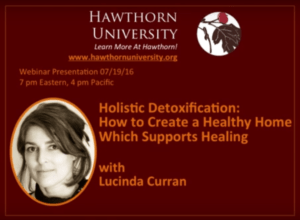They may smell nice, but perfume stinks in terms of what it is made of.
Prompted by the discovery of a list of ingredients used in perfumery on the International Fragrance Association, I felt it time to write, about the toxic chemical cocktail used in fragrances and perfumes.
Perfume – A Brief Overview
Perfumes are as old as humanity ~ in ancient times, perfumes were made from flowers and other naturally scented things, including wood (sandalwood), rind (orange), blossoms (jasmine, rose) and so on.
As technology “advanced,” (I always cringe at the idea that the industrial revolution only improved or advanced humankind), manufacturers found chemicals (esters and other aromatic compounds) that could mimic these smells.
These allowed for a cheap alternatives (although you would hardly think so when you consider the price of perfumes).
I remember in high school making smells from chemicals – banana and other sickly sweet smells that permeated our erasers, paper, pens and similar at the time.
Due to the “trade secret” aspect of perfumery, there is no need for manufacturers to list their ingredients (or potential allergens, for that matter) anywhere for the public to see.
Perfume – And It's Effects
Until now, I have felt like some eccentric spokesperson out on a limb far far away from reality, ranting and raving about the chemicals used, the toxic effects on our health, and the insanity of the inclusion of untested chemicals in our perfume and personal care products.
Added to this, there is the complete unknown consequences of using these chemicals together (known as the synergistic effect).
Rachel Carson (in “Silent Spring”) wrote about this in the 1960s.
Scientists are beginning to notice that there are changes to many species, these changes are particularly affecting the males. Male genitals are not developing normally, male are becoming “feminised.”
There is a lot that is being discovered, and a lot that is being brushed aside by the wealthy manufacturers and big businesses.
The WHO, in 2012 recognised that many chemicals contained in perfumes and other personal care products are in fact endocrine disrupting chemicals (EDCs) – this means that they are disrupting the normal functioning of the hormone system which can have developmental, reproductive and longer-term health repercussions.
Recently, I saw this question: teen pregnancies are lower now ~ is this due to the marketing/education campaigns or the effects of the chemicals being used?
I can only guess at the answer, and no doubt, you will be able to guess at my guess.
Perfume – Some Ingredients
But let's look at some of the chemicals used in perfume, from the list from the International Fragrance Association… and I will list the potential effects as per The Chemical Maze (Bill Statham's book).
Triethanolamine (TEA) made from ethylene oxide and ammonia
potential effects: allergic contact dermatitis; skin irritation; may react with nitrates to form nitrosamines [carcinogenic]; on NIH hazard list
Yikes! It is included in personal care products, perfumes too, that are applied to the SKIN even though it is a skin IRRITANT!
Benzyl Cinnamate
potential effects: Cinnamates can cause a stinging sensation in some people; on NIH hazard list
And another one!!
Acetal (derived from acetaldehyde)
potential effects: CNS [central nervous system] depressant; respiratory depression; cardiovascular collapse; no known skin toxicity; possible high blood pressure; on NIH hazard list
How reassuring (please excuse my tongue being firmly wedged in my cheek) that there is no skin toxicity… If my central nervous system and cardiovascular system collapse, I hardly think I would be worrying about the skin irritation…
What is ultra-scary, is that these chemicals, because they are “misted” are easily inhaled… This means that they bypass the skin and can directly enter the blood stream, and also affect the brain (hence the CNS involvement).
I won't keep going with the list. I randomly picked three… and to me, that says enough to know that at the very least CAUTION IS WARRANTED.
Perfume – Why Do We Need It?
As a health care practitioner, I also have to ask: why do people need perfume???
- Is it to mask body odour?
- Or because their indoor air is polluted?
- Do you smoke in the car? Why??
If it is any of these reasons, then I would be seeking to address the underlying problem: I would look into diet (including medications) and lifestyle, and probably prescribe herbs; I would suggest opening windows and increasing ventilation, and if the outside air is bad, suggest getting a decent air purifier; I would explore why they smoke and assist them with quitting, if they were ready…
A Word on Air Fresheners
Did you also know that “air fresheners” do three things: they inhibit your ability to smell properly, they coat everything with a layer of scent held there with phthalates and they add a synthetic fragrance.
What this means, is that the problem isn't addressed – and as such, they are hardly freshening the air.
The smell is still there, but –
- You can't smell it properly,
- Your nasal passages, skin, clothing and hair are all coated with fragrance and phthalates, and
- There is now an abundance of chemicals in your home ~ adversely affecting the indoor air quality.
Please think before using a synthetic fragrance of any kind…
And, if you need further advice please get in touch.
References:
#perfume #fragrance #chemicalsandhealth
(c) 3/2/12, rev 11/2/16






